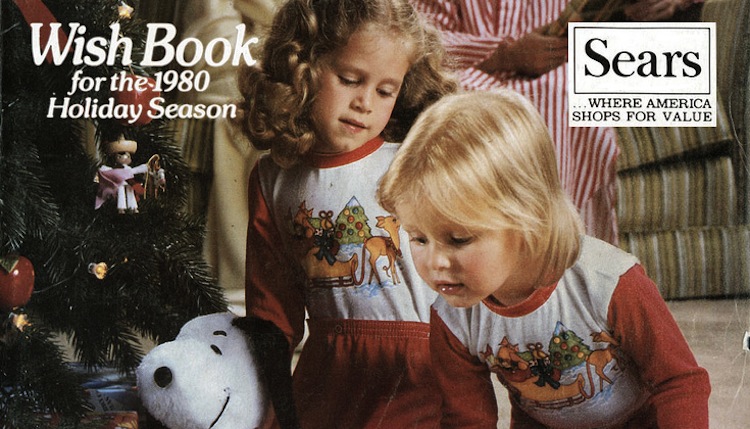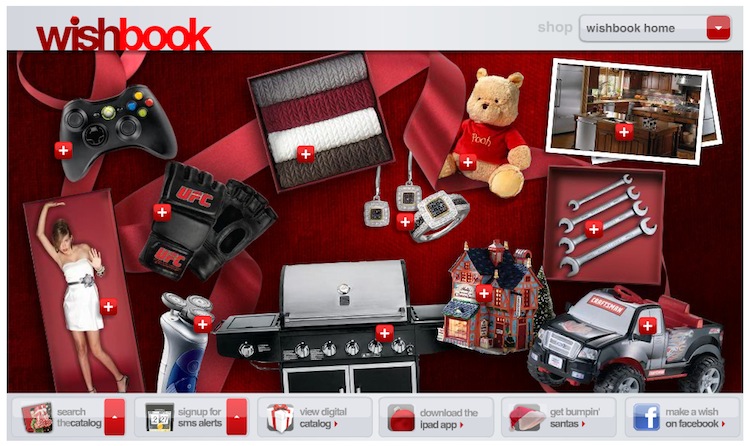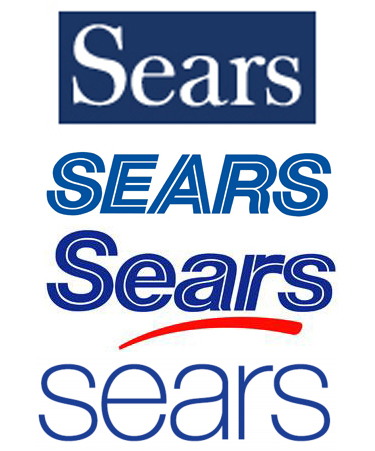
Remember the Sears Holiday Wish Book? Oh, when that ingenious piece of pure consumerism propaganda arrived in the mail, usually around mid-September, I perused the pages for days on end, like a man in solitary being offered a peek of the Playmate of the Year issue. My youth, and maybe yours, is full of memories of Sears, Roebuck and Co. Our dad’s workbench was full of Sears tools. Our mom’s kitchen was full of Sears appliances. And, more likely than not, our closets and toy boxes were filled with Sears brands as well.
Sears was the largest retailer in the United States for most of the 20th century. But today, Sears only remains a top 10 retailer because of its merger with Kmart five years ago. What happened? How could a brand so in touch with the American construct and consumer for nearly a century lose it in such a relatively short time?

A detail of a Sears Wish Book cover from the good old days
Sears is a mere shell of what it once was because it has become irrelevant to today’s consumer. And now, to combat the problem, Sears is once again trying to re-invent themselves as an online retailing giant. New chairman Eddie Lambert’s goal is to be the next Amazon. A reinvented Wish Book has been hyped by the company because it moves the catalog online, where it includes links to social media. Yet this doesn’t address the real issues. Sales have continued to decline with the third quarter reporting just in.
While Sears is attempting to become more relevant to younger consumers through social media and web commerce capability, their offerings lack the variety and depth that their new target demands. Younger audiences won’t find the new Sears brand to be any more appealing just because it has moved its Wish Book online. And customers who remember what Sears was will continue to walk away. The brand appears to be chasing everyone, instead of leading, as it once did.

The Sears Holiday Wishbook (now one word), in its current, online state
To add insult to injury, Sears continues to try and combat the problem visually, by changing its brand identity three times in the last 10 years. Sears’ latest incarnation of itself is underwhelming. Changing a logo doesn’t make your brand more relevant. But it usually does signal something is wrong.
Multiple identity changes are often signs and symptoms of a bigger problem. Bad identities and bad websites are the result of bad decisions being made in an attempt to play catch-up where you have fallen behind. But it typically results in putting “lipstick-on-the-pig,” unless you dig in deep and find out what is really wrong with a company. For Sears, it’s obvious that merchandising has become a lost art. What have they done to innovate their retail model? When is the last time you thought about walking into a Sears store? If the in-store experience isn’t intact, then the brand experience is gone.

Sears’ logo through the years
Companies and brands have realized that finding the truth in who they are and what they stand for can bring about certain and genuine change. I still have those true, nostalgic feelings about Sears, as I’m sure you do, too. And as we approach the holiday season, the only thing in my Wish Book is a Christmas miracle for this American icon.
The application deadline for Fast Company’s World Changing Ideas Awards is Friday, December 6, at 11:59 p.m. PT. Apply today.